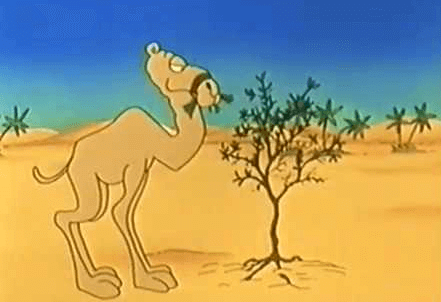NCERT Solutions for Class 8 English It So Happened Chapter 1 - How the Camel Got His Hump
Comprehension check (Page 3)
Q1: What tasks, do you think, were assigned to the dog and the ox?
Ans: The dog was assigned the task of fetching and carrying sticks, while the ox was assigned the task of ploughing.
Q2: Why did the camel live in the middle of the desert?
Ans: The camel lived in the middle of the desert because it did not want to work. It ate sticks, thorns, and prickles, and when anybody spoke to it, it said “Humph!” and nothing more.
Q3: What made the dog, the horse and the ox very angry?
Ans: The man told the dog, the horse and the ox that since the camel cannot work, he would leave it alone and the three of them would have to work double-time to make up for the work not done by the camel. This made the three of them very angry.
Q4: How did the Djinn know the horse was complaining against the camel?
Ans: The Djinn knew that the horse was complaining against the camel because he was in charge of all deserts and knew about everything happening in relation to his deserts.
Comprehension Check (Page 5)
Q1: The camel was looking at his own reflection in the pool. What does it suggest to you about the camel?
Ans: The camel’s looking at his own reflection in the pool shows that he was proud of his appearance, especially his back. He liked admiring himself.
Q2: The camel said, “Humph” repeatedly. How did it affect him?
Ans: When the camel said “Humph!” repeatedly despite the Djinn’s warning, his back puffed up into a big hump.
Q3: What, according to the Djinn, was the use of the “humph”?
Ans: According to the Djinn, the "humph" was useful for storing his food and using it during continuous work for many days.
Q4: “…he has never yet learned to behave”. In light of this, what is the writer’s opinion about the camel?
Ans: According to the writer, the camel is still a very lazy animal that is unwilling to work. After he got the hump, the Djinn asked him to go out of the desert to help the other three animals. It seems that the camel still did not behave himself and worked lazily in the desert itself. It is for this reason that he was still unable to complete the pending work of those three missed days; he continued carrying the hump and living in the desert.
Exercise
Q1: Can this story be factually true?
Ans: No, it is not a factually true story. It is an imaginative tale.
Q2: What, according to you, is the story about? Consider the following:
(i) How the world began.
(ii) Why everyone should do his/her share of work seriously.
(iii) How animals are important to humans.
(iv) How the camel got his hump.
Ans: (iv) How the camel got his hump.
Q3: What did you do over the weekend? Were you generally active or idle? Please check your back before starting to discuss or answer the question.
Ans: Last weekend, I woke up at 8 A.M. and did some physical exercise in the morning. I helped my mother in doing the household chores. By evening, I played badminton with my sister. Overall, I spent my weekend in an active manner. Yes, I have checked my back and there is no hump.
Q4: There are broadly two categories of workers – those who prefer to do today what they can do tomorrow, and those who prefer to do tomorrow what they can do today. Where do you belong?
Ans: I belong to the first category of workers, i.e. those who prefer to do today what they can do tomorrow. This implies that I prefer doling my work promptly on time rather than unnecessarily piling it up for the future.
|
36 videos|330 docs|56 tests
|
FAQs on NCERT Solutions for Class 8 English It So Happened Chapter 1 - How the Camel Got His Hump
| 1. How did the camel get his hump? |  |
| 2. What is the moral of the story "How the Camel Got His Hump"? |  |
| 3. Who punished the camel in the story? |  |
| 4. How did the camel's hump affect him? |  |
| 5. What lesson can we learn from the story of "How the Camel Got His Hump"? |  |






















